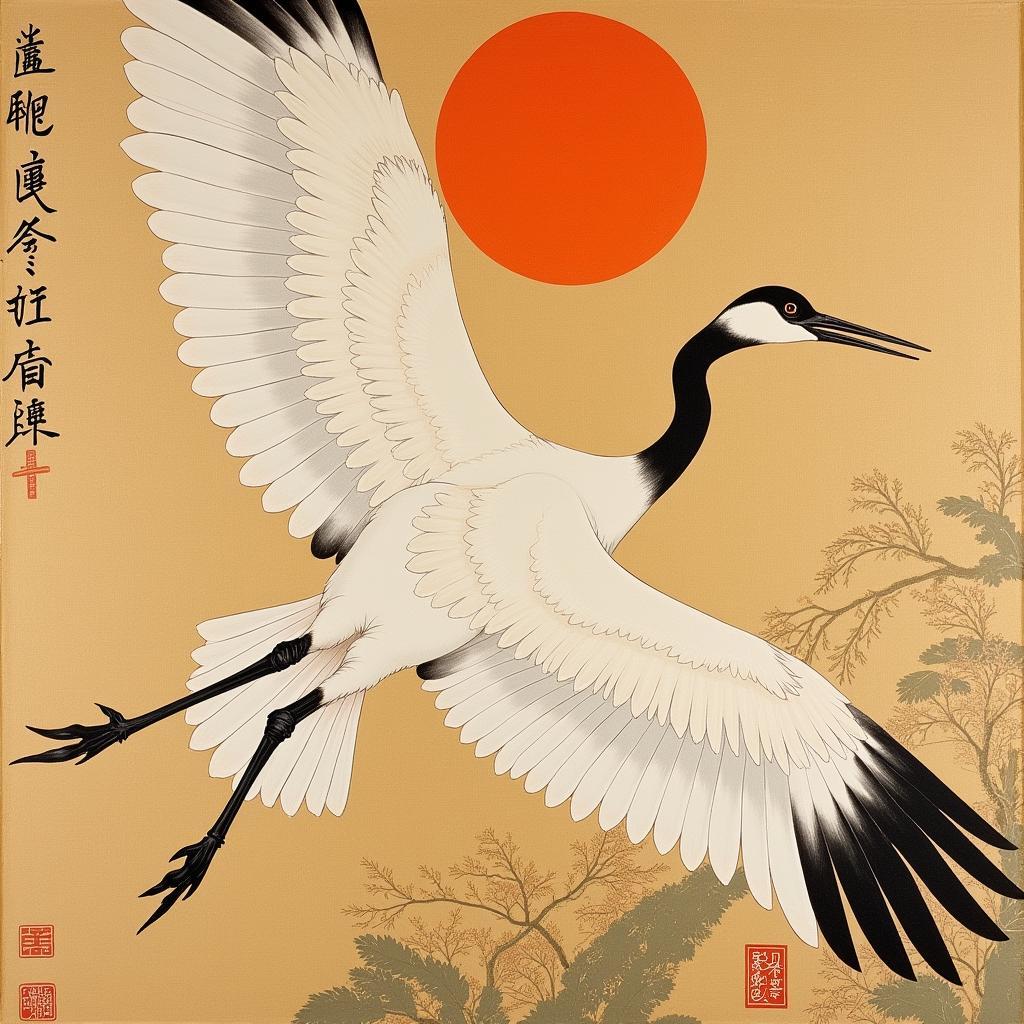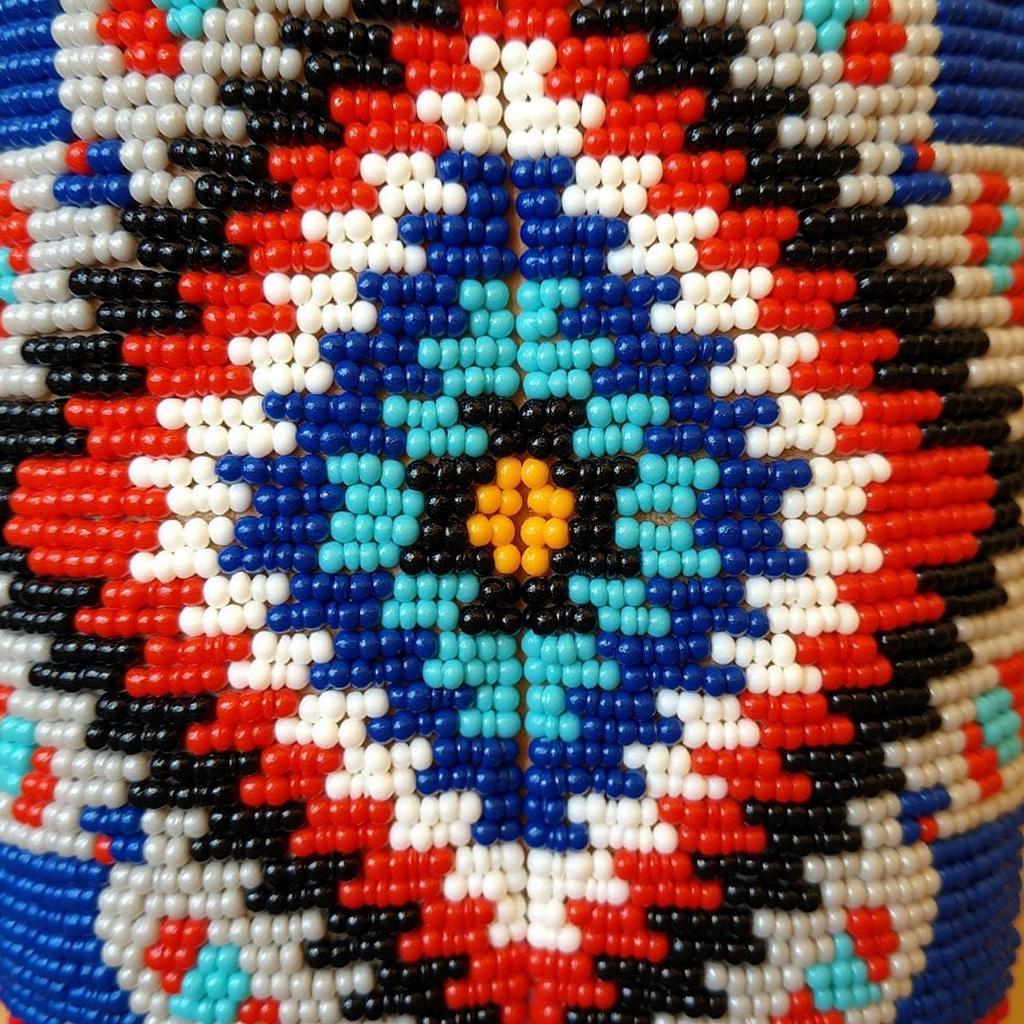Unveiling the Mystique of Japanese Art Symbols
Japanese Art Symbols, deeply rooted in tradition and rich with meaning, offer a captivating glimpse into the heart of Japanese culture. From the serene beauty of cherry blossoms to the powerful symbolism of the dragon, these artistic motifs permeate various art forms, from ancient paintings and woodblock prints to modern tattoos and graphic design. This exploration will delve into the profound significance and aesthetic appeal of these iconic symbols, uncovering the stories they tell and the emotions they evoke. Let’s embark on a journey to discover the fascinating world of Japanese art symbols. Check out some inspiring examples of oriental yard art if you’re looking to incorporate Eastern aesthetics into your own space.
Exploring Common Japanese Art Symbols
Japanese art is replete with a diverse array of symbols, each carrying its own unique meaning and significance. These symbols often reflect aspects of nature, mythology, folklore, and spiritual beliefs. Understanding these symbols adds another layer of appreciation for the intricate artistry and cultural depth embedded within Japanese art.
The Crane: Symbol of Longevity and Good Fortune
The crane, revered for its elegance and grace, holds a prominent place in Japanese art. Often depicted in flight or standing amidst lush landscapes, the crane symbolizes longevity, good fortune, and fidelity. Its pure white plumage and graceful movements evoke a sense of peace and tranquility.
 Japanese Crane Symbolism in Art
Japanese Crane Symbolism in Art
Cherry Blossoms: Embracing the Ephemeral Beauty of Life
The delicate beauty of cherry blossoms, or sakura, holds a profound cultural significance in Japan. Representing the transient nature of life and the beauty of impermanence, cherry blossoms are a recurring theme in Japanese art. Their fleeting bloom serves as a reminder to cherish the present moment. Have you ever wondered about the artistry behind decorating everyday objects? Learn more about art on cups and the creative ways to personalize your drinkware.
The Dragon: A Powerful Symbol of Strength and Wisdom
The dragon, a mythical creature imbued with power and wisdom, is another prominent symbol in Japanese art. Often depicted with serpentine bodies and fearsome features, the dragon represents strength, courage, and good luck. It is also associated with water and rainfall, essential elements for life and prosperity.
Delving Deeper into the Meaning of Japanese Symbols
Understanding the layered meanings behind these symbols enhances our appreciation of Japanese art. While some symbols hold universally recognized meanings, others carry nuanced interpretations depending on the context and the specific artistic representation.
Koi Fish: Representing Perseverance and Strength
The koi fish, known for its vibrant colors and ability to swim upstream against strong currents, symbolizes perseverance, strength, and courage. Often depicted in ponds or swimming amidst flowing water, the koi fish represents overcoming obstacles and achieving success. For those interested in bold and meaningful art, explore the world of og abel tattoo art and its striking imagery.
The Tiger: Embracing Courage and Protection
The tiger, a symbol of strength and courage, is often depicted in Japanese art as a powerful protector against evil spirits. Its fierce demeanor and striking stripes make it a visually captivating and symbolically potent motif.
The Enduring Legacy of Japanese Art Symbols
Japanese art symbols continue to inspire and fascinate audiences worldwide. Their timeless appeal lies in their ability to convey profound meanings and evoke powerful emotions through visually stunning artistic representations. Consider incorporating these symbolic elements into your home decor. Explore the options available in blue and white art and create a serene and stylish atmosphere. If you’re drawn to artistic expressions of national pride, delve into the world of patriotic folk art and discover the rich symbolism within.
These symbols are not merely decorative elements; they are integral components of Japanese culture and artistic expression. By understanding the stories behind these symbols, we gain a deeper appreciation for the rich tapestry of Japanese art and its enduring legacy.
Kazuko Shimizu, renowned art historian specializing in Japanese symbolism, notes: “Japanese art symbols offer a window into the soul of Japan. They are a testament to the deep connection between art, nature, and spirituality.”
Hiroshi Sato, a prominent contemporary Japanese artist, adds: “These symbols continue to inspire new generations of artists, providing a rich vocabulary for creative expression.”
Akari Tanaka, curator of the Tokyo Museum of Art, observes: “The enduring power of these symbols lies in their ability to transcend time and cultural boundaries, resonating with audiences across the globe.”
Conclusion
Japanese art symbols are a testament to the enduring power of art to convey meaning and emotion. From the delicate beauty of cherry blossoms to the powerful symbolism of the dragon, these motifs offer a captivating glimpse into the rich tapestry of Japanese culture. By understanding these symbols, we can deepen our appreciation for the artistry and cultural depth embedded within Japanese art.
FAQ
-
What are the most common Japanese art symbols?
Some of the most common symbols include the crane, cherry blossoms, the dragon, koi fish, and the tiger. -
What does the crane symbolize in Japanese art?
The crane represents longevity, good fortune, and fidelity. -
What is the significance of cherry blossoms in Japanese culture?
Cherry blossoms symbolize the transient nature of life and the beauty of impermanence. -
What does the dragon represent in Japanese art?
The dragon symbolizes strength, courage, good luck, and is associated with water and rainfall. -
What is the meaning of the koi fish symbol?
The koi fish represents perseverance, strength, and courage, symbolizing overcoming obstacles. -
What does the tiger symbolize in Japanese art?
The tiger is a symbol of strength, courage, and protection against evil spirits. -
Where can I learn more about Japanese art symbols?
Museums, art books, and online resources are excellent places to explore Japanese art and symbolism.
For further support, please contact us at Phone: 02462573573, Email: danteum@gmail.com or visit our location: Savico Megamall, 7-9 Đ. Nguyễn Văn Linh, Gia Thụy, Long Biên, Hà Nội 10000, Việt Nam. We have a 24/7 customer service team available.


